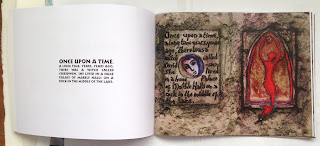 |
| Aqua After Hours, 2013, watercolour. |
For more than a year I've been working on a design which is going to be applied in specialist vinyl to the night shutters of a hairdressing salon, Aqua, in South London. Parise, the owner, asked me to create a trompe l'oeil painting which showed the interior of the salon, accurate in perspective to the viewer on the street, but in an imaginary magical midnight scene where everyone is getting ready for a fairy tale masked ball. Together we spent a lot of time finding pictures of hairstyles, clothing and references, and I spent even longer trying to get a drawing we were both happy with before I started the painting. She has recently refurbished the salon with very beautiful lighting, and a fabulous London brick wall, and she wanted to keep enough of the real interior to catch the eye of passers by, but make them double take at all the crazy goings on.
I've had to live with the painting around my studio this year, turning it to the wall for short periods to forget what I've already done and then sneaking up on it with a fresh eye to check it's not full of awful mistakes! I've been checking the colours and tones, making sure the light sources are all fairly believable, and generally procrastinating about finishing it. I've become a fan of listening to audio books while I paint, and have caught up with quite a pile of reading. Parise has been brilliant to work with, and has a particularly keen eye. Those little things I knew were wrong but hoped I might get away with were gently noticed and pointed out! All to the good though, and now it's finally finished.
We are in the process of organising the transfer of the design to the shutters, and will be able to post a new photo of the finished shutters before too long.




























